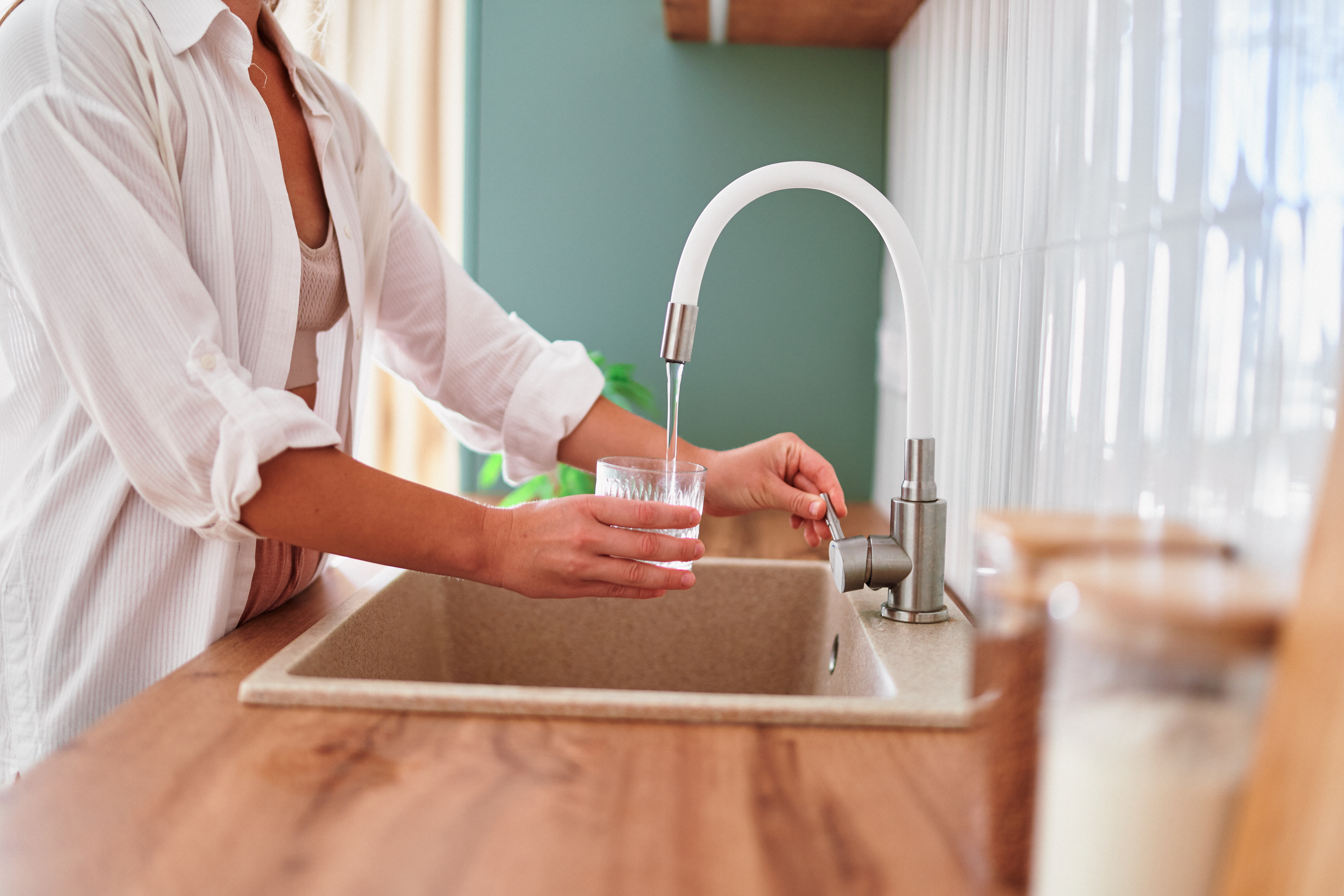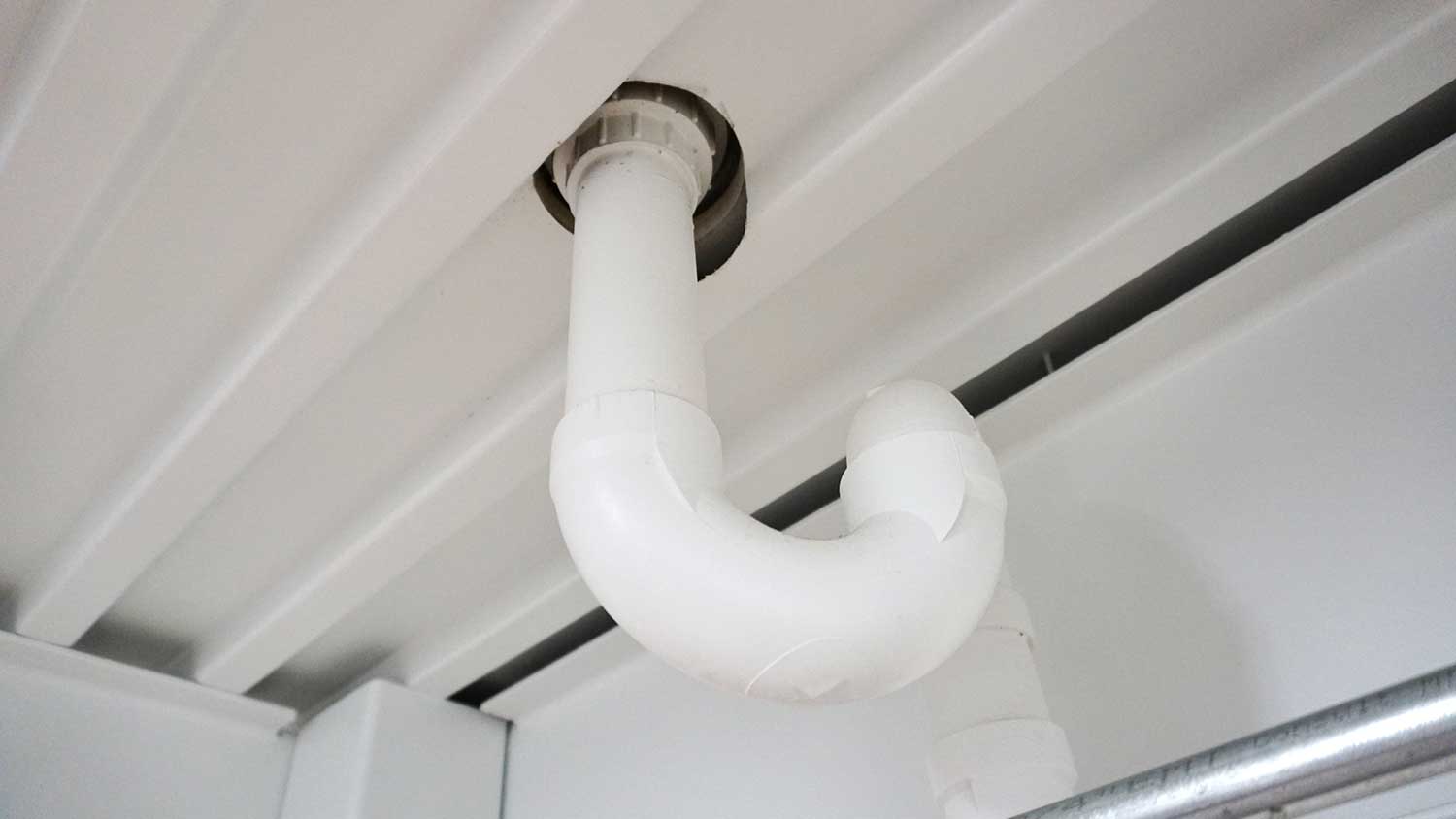
Discover what impacts main water line repair costs in Los Angeles, such as soil conditions and permits, so you can confidently plan your project.
Stick with standard pipe sizes for a flawless flush


The standard toilet drainpipe is 3 inches in diameter.
Some parts of your home’s drainage system may have 4-inch pipes.
High-rises and large industrial buildings may have 6-inch drainpipes.
Always check your local building code to understand drainpipe requirements.
Pipe replacement costs $200 to $700 on average.
Using the wrong toilet drainpipe size is a one-way ticket to a clogged or overflowing toilet. Most toilets have a 3-inch drainpipe, but it depends on several factors. Since your toilet’s drainage system goes beyond a single pipe, it’s best to look at the whole picture. This guide will show you everything you need to know about toilet drainpipe sizes, but don’t hesitate to contact a professional toilet installer who can identify the correct pipe.
The standard toilet drainpipe is 3 inches in diameter, though some toilets may use 4-inch pipes. Four-inch pipes are commonly used to carry wastewater out of the house and to the main drain line. Here are some standard toilet drainpipe sizes and where you’ll find them:
3-inch drainpipes: The standard drainpipe used in single-family homes.
4-inch drainpipes: These are used in larger residential buildings (multi-family units with up to 500 fixtures) and high-occupancy spaces (like commercial bathrooms). They can also be found in drain lines and the main drainage stack in single-family homes.
6-inch drainpipes: These are limited to high-rise buildings, apartment complexes, and large commercial or industrial buildings.
Using the correct toilet drainpipe size is important to avoid clogged drains and other more serious damage to your bathroom. Drainpipes allow for the free flow of water and waste. If that drainpipe is too large, the water flow may not be strong enough to move any waste through. On the other hand, a too small drainpipe cannot handle the waste volume and starts to overflow.

The best size for a toilet drain depends on the pipe’s location in the drainage system. Three types of pipes connect your toilet to your home’s main drain stack: the toilet drainpipe, an elbow-shaped closet bend, and a horizontal drain line.
Most residential bathrooms use the following sizes, but it can occasionally vary. For this reason, it’s a good idea to hire someone to replace your toilet if it requires work on any of the underlying plumbing.
| Type of Pipe | Standard Size (Diameter in Inches) |
|---|---|
| Toilet drainpipe | 3 |
| Toilet closet bend | 3x4 |
| Toilet drain line | 4 |
The toilet drainpipe runs vertically from the toilet into a closet bend (or elbow-shaped pipe) that connects your toilet to the drain line. The standard toilet drainpipe size is 3 inches in diameter, though some older homes may have a 4-inch drainpipe. Modern homes use a PVC schedule 40 drainpipe instead of metal.
The drain line is the sloped, horizontal piping that carries wastewater from your bathroom to your home’s vertical drainage stack. In most homes, the drain line uses piping that’s 4 inches in diameter, the same size as the main drainage stack.
Some homes may have smaller drain lines (3 inches in diameter instead of 4). In that case, you'll need to use a reducing connection to connect the drain line to the closet bend.
The closet bend acts as a bridge between the toilet drainpipe and the drain line. The standard closet bend has a diameter of 3 inches on one end and 4 inches on the other end. This is because one end connects to your toilet’s drainpipe, and the other end connects to the drain line.
For most homeowners, toilet installation costs $250 to $550. You can save cash by installing your toilet, but you’ll need to know the size of the pipes. All pipes have a nominal pipe size—this is the name of the pipe that you’ll see in the hardware store. It refers to the approximate diameter of the pipe opening, such as “3-inch PVC pipe,” but excludes the thickness of the pipe walls.
Most toilets use PVC pipes as drainpipes, though older homes may have metal piping. If your drainpipe is made from PVC, you can find the diameter written somewhere on the pipe. If the pipe isn’t labeled, follow these steps for pipes with male threads (screw-like threads on the exterior of the pipe ending) or no threads:
Take a soft tape measure and measure the circumference of the pipe.
Divide the circumference by pi (3.14159) to get the diameter.
Use a pipe size conversion chart to get the nominal pipe size.
A 3-inch PVC pipe will be slightly larger than 3 inches, and a 4-inch PVC pipe will be slightly larger than 4 inches. If your pipe has female threads, you can use a ruler caliper to measure the inside diameter.

A few different things influence the pipe size of your toilet drain, but a local toilet installer should be well-versed in all of them. They’ll understand local building codes and your area's most common plumbing setups. Here are some factors to consider.
Local building codes dictate a number of toilet dimensions, from the clearance around the toilet to the diameter and layout of the pipes. Check your local building codes to determine which toilet drain diameter is required in your area.
The toilet flange is a pipe fitting that connects the toilet to the drainage system. Most toilet flanges are designed to fit a 3-inch drainpipe, but occasionally, you’ll find a flange that fits a 4-inch drainpipe. If you already have a flange installed, check the size to determine the size of your toilet drainpipe.
The type of toilet may impact the pipe size. Modern low-flow toilets have 3-inch drainpipes, whereas older, less efficient models may have 4-inch drain lines.
The slope of the pipe and the distance from your toilet to the main sewer line or septic tank impact the velocity of the water. You'll need to use a certain diameter pipe to maintain the proper flow rate and water pressure.
If you hire a plumber, they’ll use a figure called a “fixture unit value” to determine the ideal drainpipe size. This figure measures the water discharge rate based on your specific toilet, the frequency of use, and the time between uses.
Your toilet connects to a horizontal drain line, but that’s not the drain line’s only fixture. Your sink, bathtub, or shower may all drain into the same line. It’s common to see several toilets draining into the same line in commercial facilities. A 3-inch pipe may work for a drain line attached to a single water closet, but you may need a 4-inch pipe for a full bathroom or multiple bathrooms on the same floor.
Toilet drainpipes move waste out of your toilet and into your sewer system. In order to do this successfully, there needs to be a careful balance of air pressure in the drainage system to move waste and water through. This is done through ventilation and drainpipe size plays a crucial role. A drainpipe that is too small or too small can stop or slow down airflow, leading to more serious plumbing issues.
If you’ve installed the wrong size pipe, you may notice that your toilet keeps clogging, is slow to drain, or leaks. Another sign that something is amiss is that sewage backs up into other fixtures.
Unless you’re experienced with plumbing, hire a pro to find the root of the problem. These are common issues with various causes—your pipes may not be the culprit. More commonly, homeowners flush things they shouldn’t flush.
If the drainpipe is the issue, your plumber should be able to swap it for the right size. For most homeowners, this type of toilet repair costs $200 to $400.
From average costs to expert advice, get all the answers you need to get your job done.

Discover what impacts main water line repair costs in Los Angeles, such as soil conditions and permits, so you can confidently plan your project.

Replacing a water main in Los Angeles is expensive, but certainly not the nation’s highest—or even California’s. Living in the Hills or on the coast can affect the total cost.

How much does a plumber cost in Los Angeles? Learn what impacts plumbing costs in the City of Angels and how to hire the best plumber in LA for your project.

Frozen underground pipes can lead to costly damage to your home. Use this guide to learn how to safely thaw them, prevent future freezes, and protect your home from expensive water damage.

Shower diverters will wear down over time and eventually need repairs. This guide will show you how to fix a shower diverter and get your shower working again.

Is the water pressure in your shower lacking? Here are common solutions to increase it so you can enjoy your showers again.